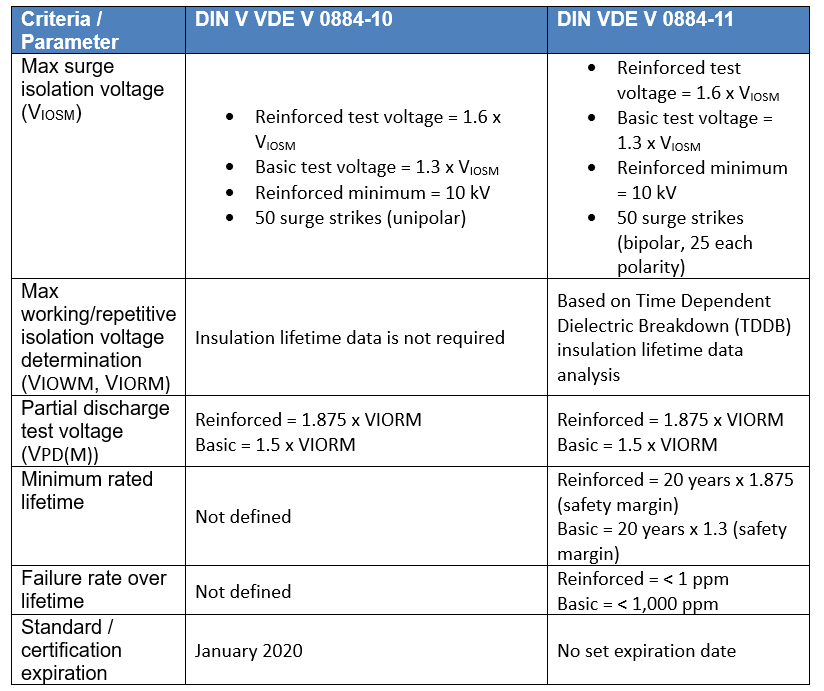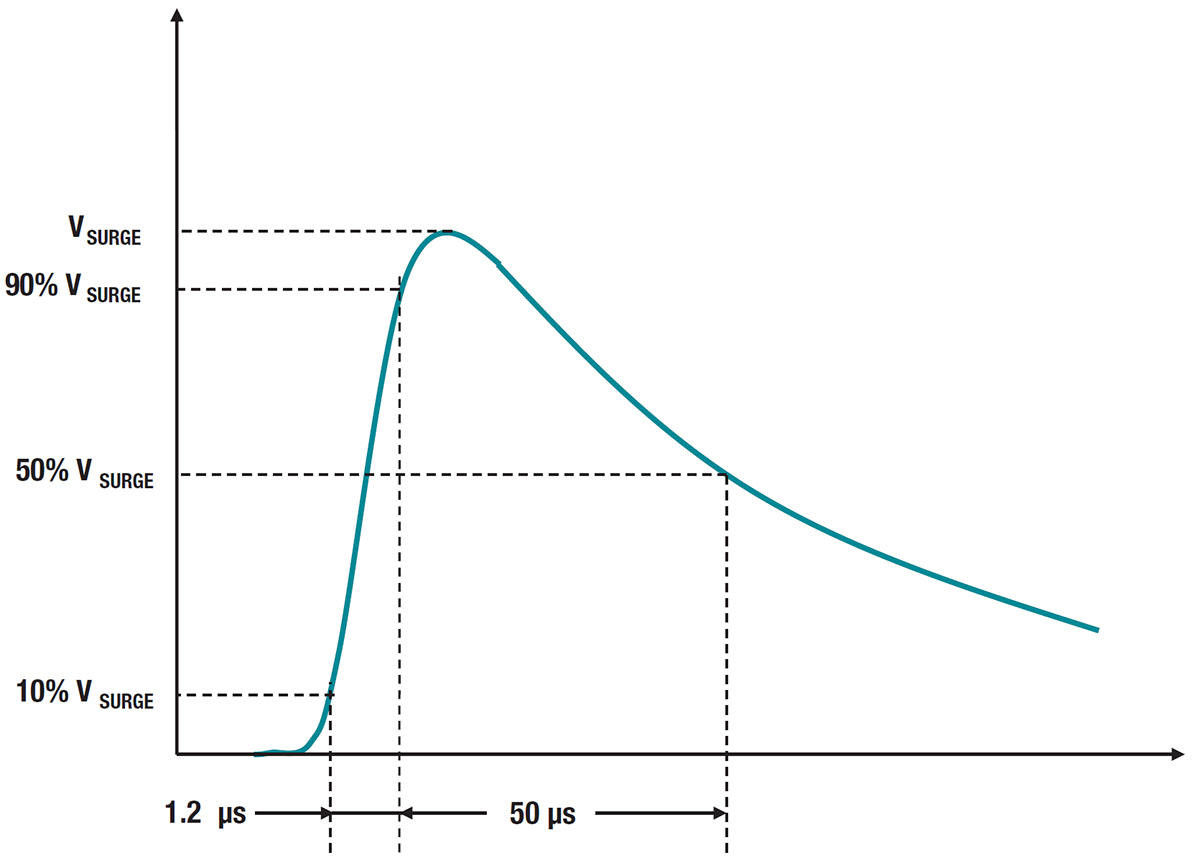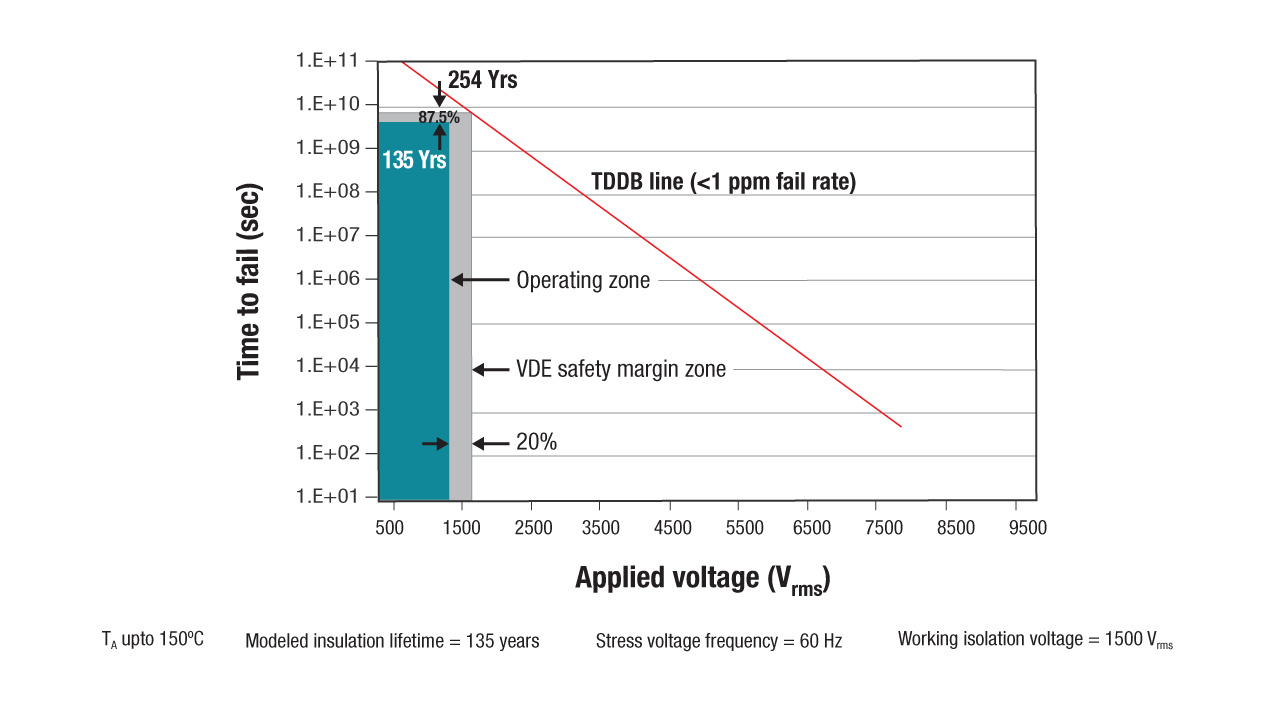By Luke Trowbridge, product marketing engineer, Texas Instruments
As of January 2020, Deutsches Institut für Normung (DIN) V Verband der Elektrotechnik, Elektronik und Informationstechnik (VDE) V 0884-10:2006-12 is no longer an active certification standard for evaluating the intrinsic insulation characteristics and high-voltage capabilities of magnetic and capacitive galvanic isolation products.
This marks the end of a three-year transition period for integrated circuit (IC) manufacturers that began in 2017, when VDE released the DIN VDE V 0884-11:2017-01 updated standard. With this change, IC manufacturers must upgrade to meet the new certification requirements or they will be required to remove VDE certification from their corresponding IC data sheets.
Because these certifications are the only component-level standards created for basic and reinforced digital isolators, they help give original equipment manufacturers and end equipment manufacturers confidence that specific isolation products will meet their systems’ high-voltage requirements and end-equipment level certifications.
What changed in the new standard?
The most significant changes from DIN V VDE V 0884-10 to DIN VDE V 0884-11 were to the certification processes and requirements. These changes, listed in Table 1 , impact the component standards for both basic and reinforced certification.

Table 1: Overview of DIN V VDE updates (basic and reinforced)
Let’s walk through each of the updates individually.
The “max surge isolation voltage” quantifies an isolator’s ability to withstand very high-voltage impulses of a certain transient profile. The surge test profile shown in Fig. 1 can occur in an installation due to direct or indirect lightning strikes, faults, or short-circuit events. While the test voltages, minimum voltage requirements, and strike count have not changed, the strikes are now performed as bipolar pulsing instead of unipolar. Twenty-five positive pulses are applied, followed by a delay greater than 1 hour but less than 2 hours, with an additional 25 negative pulses then applied to the same unit.
During a single surge pulse, some of the charge remains in the isolation dielectric, creating a residual electric field. In unipolar testing, the residual field reduces the total electrical field seen by the isolation barrier during subsequent pulses. Bipolar pulsing is more stressful to the isolation barrier because the residual field now works additively with the previous pulse, thereby exceeding the magnitude of the field versus any previous pulse in the testing sequence of that unit.

Fig. 1: The surge test profile imitating direct or indirect lightning strikes, faults, or short-circuit events
DIN VDE V 0884-11 now requires the collection of insulation lifetime projection data using the industry-standard time-dependent dielectric breakdown (TDDB) test method. In this test, all pins on each side of the barrier are tied together, creating a two-terminal device with a high voltage applied between the two sides. The insulation breakdown data is collected at various high voltages, switching at 60 Hz at both room temperature and the max operating temperature.
Fig. 2 shows the intrinsic capability of the isolation barrier to withstand high-voltage stress over its lifetime. Based on the TDDB data, the intrinsic capability of the insulation is 1.5 kVRMS , with a lifetime of 135 years. Other factors, such as package size, pollution degree, and material group, can further limit the working voltage of the component. This data takes IC manufacturers several months — up to years — to collect it for each certified device.

Fig. 2: TDDB test data showing the intrinsic capability of an isolation barrier to withstand high-voltage stress over its lifetime
For reinforced insulation, DIN VDE V 0884-11 requires the use of a TDDB projection line with a failure rate of less than one part per million (ppm). Even though the expected minimum insulation lifetime is 20 years at the specified working isolation voltage, the new reinforced certification requires additional safety margins of 20% for the working voltage and 87.5% for the device’s rated lifetime, which translates to a minimum required insulation lifetime of 37.5 years at a working voltage that’s 20% higher than the specified value.
For basic insulation, the DIN VDE V 0884-11 requirements are less stringent, with an allowable failure rate of less than 1,000 ppm. The 20% working voltage margin is still required, but the lifetime margin is reduced to 30% for basic insulation devices, which translates to a total required lifetime of 26 years at a working voltage that’s 20% higher than the rated value. DIN V VDE V 0884-10 did not previously define the minimum rated lifetime and failure rate over lifetime.
While the partial discharge testing criteria does not change in DIN VDE V 0884-11, it is useful to understand the relevance of partial discharge testing on isolation components. Both TI and VDE still test for partial discharge in silicon dioxide-based digital isolators, even though silicon dioxide does not have partial discharge. Optocouplers use partial discharge testing as a means to screen out bad production units built with an unwanted void in the dielectric. It is critical to rule out units with any defects, but it is important to note that you cannot depend on this testing as a minimum guaranteed lifetime test. The TDDB testing done on digital isolators — but not on optocouplers — is an accurate lifetime testing process.
Certifications allow end equipment manufacturers to use isolation devices with confidence in their products worldwide, meet end-application design requirements, and know whether an isolator will work reliably throughout its lifetime. Updates and revisions to certification requirements like those from DIN VDE ensure that high-voltage safety requirements remain relevant and as stringent as necessary. Because it is not a guarantee that a component manufacturer has met the requirements of DIN VDE V 0884-11, it is crucial to review board components for both future and existing designs to ensure that they still meet the certification requirements.
Additional resources:
- View TI’s digital isolator certifications.
- Download the white paper “ High-voltage reinforced isolation: definitions and test methodologies.”
Advertisement
Learn more about Electronic Products MagazineTexas Instruments





